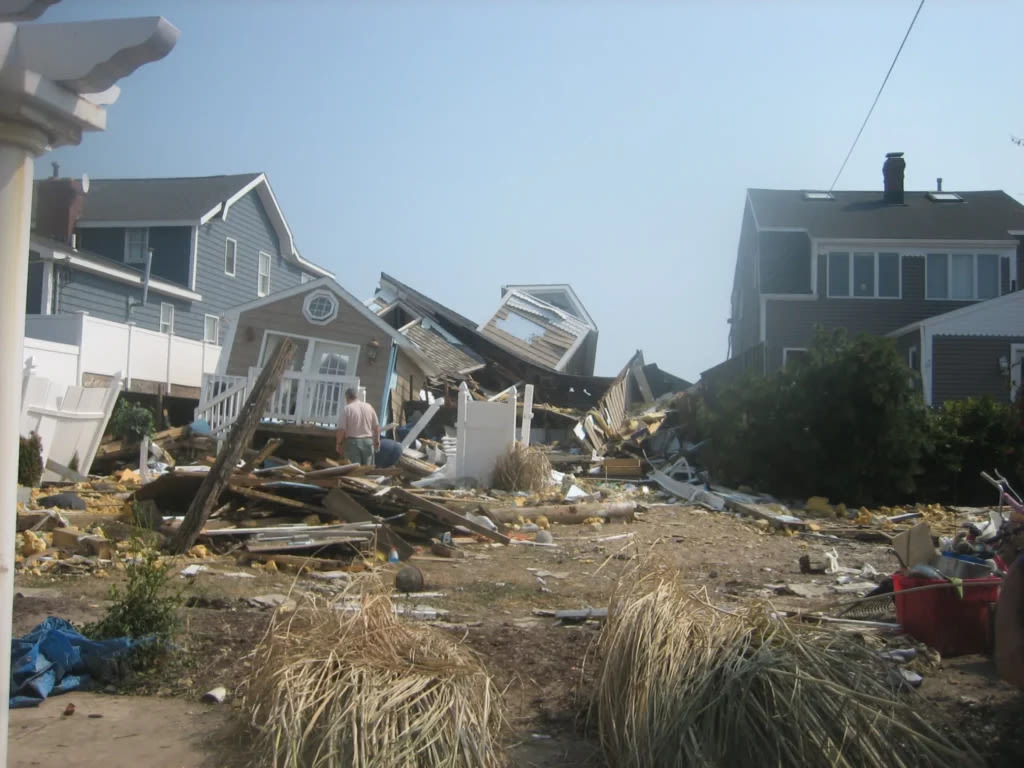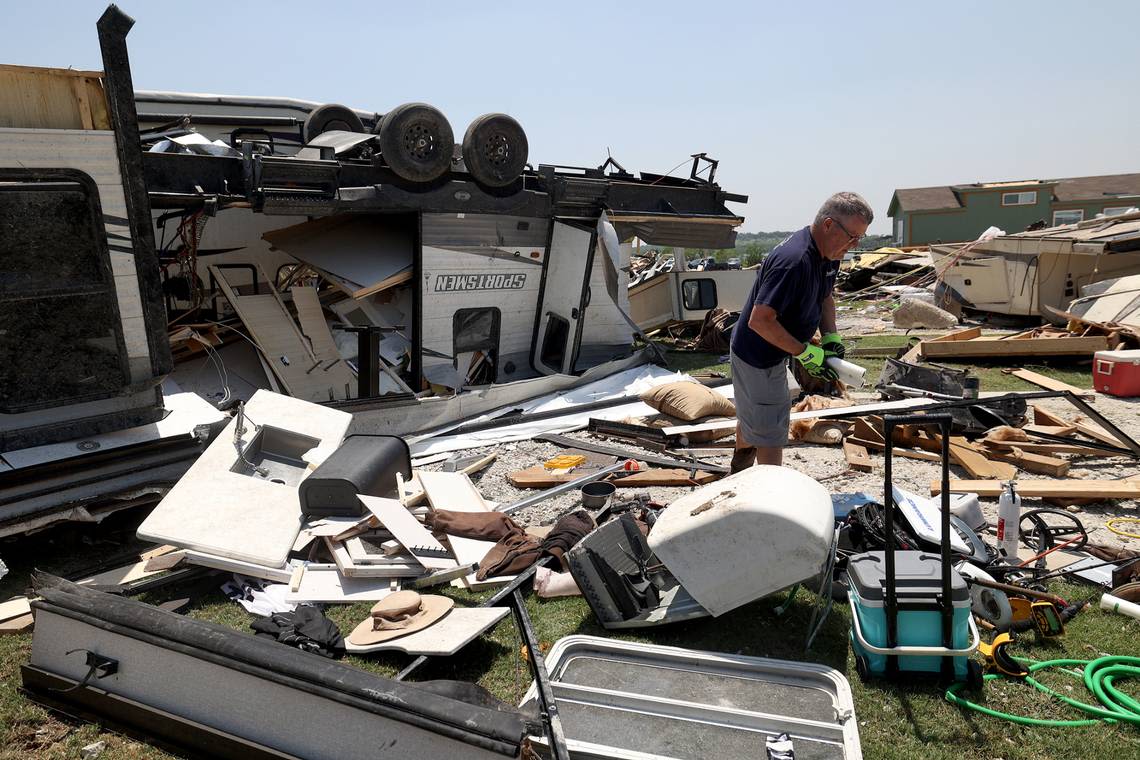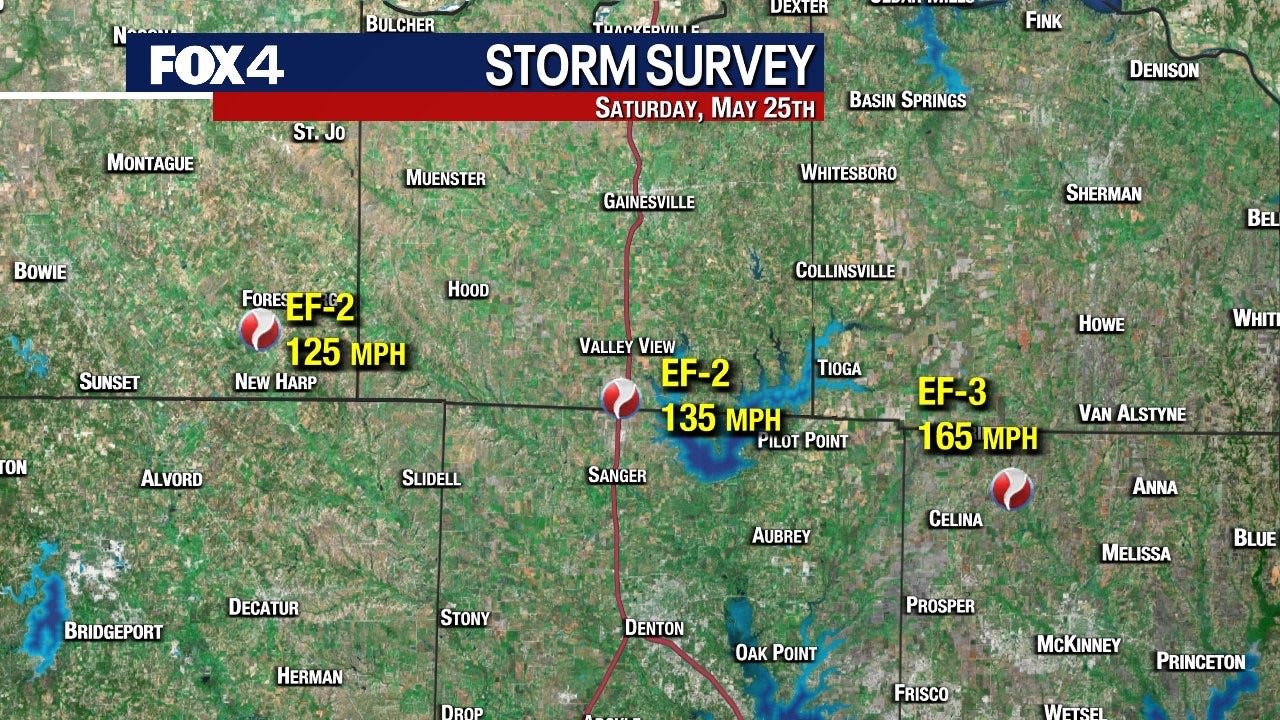Search results
People also ask
What is a maximum sustained wind?
What is the maximum sustained wind associated with a tropical cyclone?
What is a sustained wind?
What is the SSHWS hurricane wind scale?
Maximum sustained wind. The maximum sustained wind associated with a tropical cyclone is a common indicator of the intensity of the storm. Within a mature tropical cyclone, it is found within the eyewall at a distance defined as the radius of maximum wind, or RMW.
The Saffir-Simpson Hurricane Wind Scale is a 1 to 5 rating based only on a hurricane's maximum sustained wind speed. This scale does not take into account other potentially deadly hazards such as storm surge, rainfall flooding, and tornadoes.
The maximum sustained surface wind speed (peak 1-minute wind at the standard meteorological observation height of 10 m [33 ft] over unobstructed exposure) associated with the cyclone is the determining factor in the scale.
Sep 5, 2020 · (NASA/AFP) When Hurricane Laura made landfall in Louisiana early Aug. 27, forecasters at the National Hurricane Center warned it would have maximum sustained winds of 150 mph. Roughly the...
News about NOAA, hurricane season, 2024
News about Cooke County, North Texas, damage
Also in the news
The numbers categorize hurricanes based on maximum sustained wind speeds ranging from 74 mph to 157 mph and above. Here’s what they look like: Dangerous winds will produce some damage. Metal...
To be classified as a hurricane, a tropical cyclone must have one-minute-average maximum sustained winds at 10 m above the surface of at least 74 mph (64 kn, 119 km/h; Category 1). [1] The highest classification in the scale, Category 5, consists of storms with sustained winds of at least 157 mph (137 kn, 252 km/h).
Aug 2, 2023 · The scale uses the maximum sustained wind speed within the storm. A Category 1 hurricane is the weakest, while a Category 5 hurricane is the strongest. Tropical depressions and tropical storms are not part of the scale, but they are also determined by wind speed. Difference Between Tropical Depressions, Tropical Storms, and Hurricanes.




